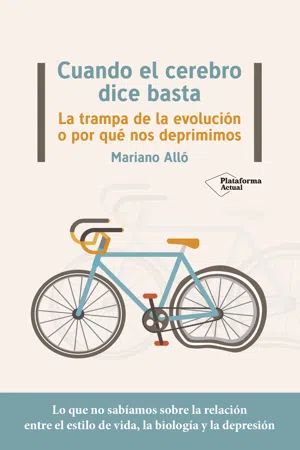Notas
1. Los genes del castillo de Nápoles
1. Weaver, I. C. G., et al. (2004). «Epigenetic programming by maternal behavior». Nature Neuroscience. doi: 10.1038/nn1276.
2. Wray, N. R., Mattheisen, M., Trzaskowski, M., y Byrne, E. M. (2018). «Genome-wide association analyses identify 44 risk variants and refine the genetic architecture of major depression». doi: 10.1038/s41588-018-0090-3.
3. Howard, D. M., et al. (2018). «The importance of the prefrontal brain regions». Nature Neuroscience. doi: 10.1038/s41593-018-0326-7.
4. Nagy, C., et al. (2015). «Astrocytic abnormalities and global DNA methylation patterns in depression and suicide». Molecular Psychiatry. doi: 10.1038/mp.2014.21.
2. La estructura de la caja negra
1. Holden, C. (1979). «Paul MacLean and the triune brain». Science, vol. 80. doi: 10.1126/science.377485.
2. Parvizi, J., y Damásio, A. (2001). «Consciousness and the brainstem». Cognition. doi: 10.1016/S0010-0277(00)00127-X.
3. Spence, S. (1995). «Descartes’ Error: Emotion, Reason and the Human Brain». BMJ. doi: 10.1136/bmj.310.6988.1213.
4. Damásio, A., y Dolan, R. J. (1999). «The feeling of what happens”. Nature. doi: 10.1176/appi.ps.51.12.1579.
5. Panksepp, J. (2005). «Affective consciousness: Core emotional feelings in animals and humans». Conscious. Cogn. doi: 10.1016/j.concog.2004.10.004.
6. Panksepp, J. (1998). Affective neuroscience: the foundations of human and animal. Nueva York: Oxford University Press. doi: 10.1176/appi.ajp.159.10.1805.
7. Panksepp, J., et al. (2000). «Part II: Biological and neurophysiological approaches to emotion». Handbook of emotions.
8. Damásio, A. R. (2003). Looking for Spinoza. Brain. ISBN 0151005575.
9. Panksepp, J. (1998). Affective neuroscience: the foundations of human and animal. Nueva York: Oxford University Press. doi: 10.1176/appi.ajp.159.10.1805.
10. Cannon, W. B. (1927). «The James-Lange theory of emotions: A critical examination and an alternative theory». American Journal of Psychology. doi: 10.2307/1415404.
11. Janak, P. H., y Tye, K. M. (2015). «From circuits to behaviour in the amygdala». Nature. doi: 10.1038/nature14188.
12. Damásio, A. R. (1996). «The somatic marker hypothesis and the possible functions of the prefrontal cortex». Philosophical Transactions of the Royal Society B: Biological Sciences. doi: 10.1098/ rstb.1996.0125.
13. Uddin, L. Q., Nomi, J. S., Hébert-Seropian, B., Ghaziri, J., y Boucher, O. (2017). «Structure and Function of the Human Insula». Journal of Clinical Neurophysiology. doi: 10.1097/WNP.0000000000000377.
14. Damásio, A. R. (2003). op cit.
15. Wood, J. N., y Grafman, J. (2003). «Human prefrontal cortex: Processing and representational perspectives». Nature Reviews Neuroscience. doi: 10.1038/nrn1033.
16. Carlén, M. (2017). «What constitutes the prefrontal cortex?». Science. doi: 10.1126/science.aan8868.
17. Fuster, J. M. (2001). «The prefrontal cortex-An update: Time is of the essence». Neuron. doi: 10.1016/S0896-6273(01) 00285-9.
3. La caja negra en acción: el funcionamiento del sistema nervioso
1. Herculano-Houzel, S. (2009). «The human brain in numbers: a linearly scaled-up primate brain». Frontiewrs in Human Neuroscience. doi: 10.3389/neuro.09.031.2009.
2. Silbereis, J. C., Pochareddy, S., Zhu, Y., Li, M., y Sestan, N. (2016). «The Cellular and Molecular Landscapes of the Developing Human Central Nervous System». Neuron. doi: 10.1016/j.neuron.2015.12.008.
3. Cimino, G. (1999). «Reticular theory versus neuron theory in the wo...
